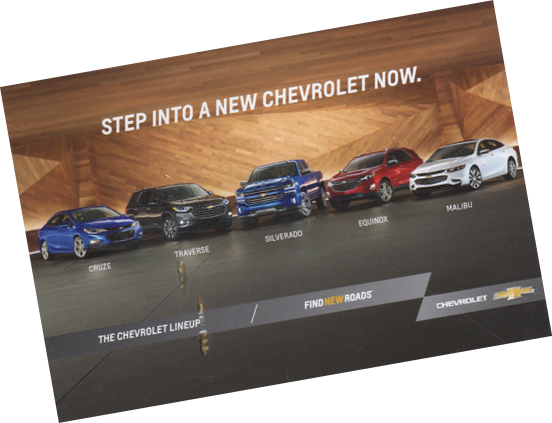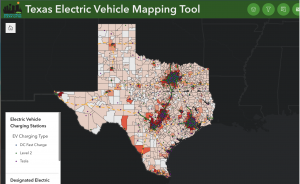There’s news on the pre-owned plug-in vehicle market. First, a little background info:
When you lease a new plug-in vehicle, the $7,500 Federal Income Tax Credit on plug-in vehicles (those with a large enough battery pack, that is) goes to the leasing company, not the lessee (i.e. not YOU). In the early years, way back in 2011-2013, a portion of this amount was given to the lessee as cash incentives. Another portion was used to buy down the money rate. Another portion was used to prop up residual value, or the price you would pay, at the end of the lease, if you want to keep the vehicle you were leasing. Due to this, I have always told people, “Don’t worry about the residual. It’ll be a higher price than the car will fetch, on the used market, so you’ll never buy it at the end of the lease.”
This advice is no longer correct.
Maybe articles like this are finally getting the word out…
I am nearing the end of the lease on my 2017 Chevy Volt and had been planning to just let it go back to the leasing company, as I’ve done twice before. For those who haven’t been reading “My Electric Vehicle Journey” raptly for years, here’s what our household has done so far:
- August 2012: Leased a 2012 Volt for 36 months (for me)
- September 2012: Leased a 2012 Volt for 39 months (for my wife)
- October 2014: Purchased a base 2014 Volt (for our daughter, as her first car)
- October 2015: Purchased a loaded 2015 Volt (for my wife)
- March 2016: Leased a 2017 Volt (for me, to replace my 2012. I used my daughter’s 2014 to tide me over, since 2016 Volt was not sold in Texas and she wasn’t driving much yet)
I recently received a mailer from Chevrolet, offering a “lease pull-ahead,” if I ended my lease early. The deal is, GM would pay the last four lease payments, if and only if I ended my lease before October 31st. The maximum payout is $2,500 or four lease payments, whichever is less, but that would be more than enough to cover those last four payments.

I started looking at inventory, since the 2019 Volts are just starting to trickle out, and found a new 2018 Volt I’d be happy with. It is another loaded Premier, but this one has Adaptive Cruise Control, which was not available, when I leased my 2017 Premier. The updates to the 2019 (power driver’s seat, faster charging, one pedal driving) were not very important to me, so I decided to think seriously about taking GM up, on their offer.
A year ago, my wife and I had discussed selling our daughter’s Volt and giving her my wife’s Volt, mainly because my daughter’s Volt lacked many of the safety features in my wife’s Volt. My wife would then lease a new Volt, as would I. The main reason we have been waiting, was to have equity in my daughter’s Volt to use as a down payment on a new Volt (or at least not to have to pay money to sell my daughter’s car). Yesterday, I checked Cars.com, just to see what used 2014 Volts were selling for, and was astounded to see 2014 Volts (with higher mileage) selling for $3,000 to $4000 more than we owed on the loan!
Hallelujah!!!!
I’m not sure why I did the following, since it had nothing to do with our “plan,” but I checked pricing on 2017 Volts. Once again, I was pleasantly surprised to find that used 2017 Volts were selling for $2,000 to $5,000 more than my Volt’s residual value! Now, the prices on Cars.com are the prices that pre-owned car dealers are asking for, for vehicles they have in stock. In the real world, individuals selling to other individuals get less, than a pre-owned dealer would get, for the exact same car. That’s because most of us don’t want to go through the hassle of selling our vehicle to a stranger. If you trade your vehicle in or sell it to a dealer, you can expect even less than if you sold it to a private party, because the dealer isn’t going to keep it. They plan to sell it (duh!) at a profit. There are websites that show you (on average) what price you can expect, when selling your car to a dealer, a private party and what you can expect to pay, if you’re buying a pre-owned vehicle from a dealer. My go-to site is Edmunds.com. They seem to have the most realistic prices, IF you enter truthful information about your vehicle. At the bottom of the main Edmunds page, there is a link that says, “Appraise your car.”
If you’re in a lease, I recommend you try this yourself. Your residual value was set, at the time you leased your vehicle. It is shown on the lease contract. Once you know that, go to the Edmunds site and appraise your car. You’ll need to know how many miles you’ve got on it, the options it has, paint color, trim level (LT, Premier, LS, LTZ, etc) and your vehicle’s current condition. It doesn’t do any good if you fib a little on your vehicle’s condition, because once your car is in front of a buyer, they’ll see the condition and pay accordingly. If the buyer is a car dealer, they’ll know if it has been in an accident.
Remember: “Garbage in. Garbage out.”
At the very end of the appraisal questions, the Edmunds site will show three prices: Trade-In, Private Party and Dealer Retail (see image below). There is one other price shown, “Certified Used Vehicle.” That’s what you’d pay, at a dealer, for a “certified” vehicle. A certified vehicle has gone through checks, required by the original manufacturer, so that the dealer can offer a warranty. Referring to the Edmunds report, you would compare the residual value of your vehicle (from your lease contract) to the “Trade-In” price, if you are going to sell it to a dealer or the “Private Party” price, if you are going to sell it to an individual. If you decide to keep your leased vehicle, you should be aware that the prices shown are without sales tax being added, so you’ll need to know the sales tax percentage, on vehicle sales, in your area in order to know the actual “drive out” price of keeping your car.
There is one other price shown, “Certified Used Vehicle.” That’s what you’d pay, at a dealer, for a “certified” vehicle. A certified vehicle has gone through checks, required by the original manufacturer, so that the dealer can offer a warranty. Referring to the Edmunds report, you would compare the residual value of your vehicle (from your lease contract) to the “Trade-In” price, if you are going to sell it to a dealer or the “Private Party” price, if you are going to sell it to an individual. If you decide to keep your leased vehicle, you should be aware that the prices shown are without sales tax being added, so you’ll need to know the sales tax percentage, on vehicle sales, in your area in order to know the actual “drive out” price of keeping your car.
What this showed me is that two of our Volts are worth more than I thought. This means it makes sense for us to keep my 2017 Volt, after the lease ends, by getting a new loan for the residual amount plus sales tax. This will be much less expensive than buying (or leasing) a new Volt. My wife is willing to drive my 2017 Volt, since it is a substantial upgrade from the 2015 she has been driving (and because she likes saving money). We can trade in my daughter’s 2014 Volt (or sell it to an individual), to reduce the amount we’ll pay for our next Volt, whether we lease or purchase it. It will be that 2018 Volt Premier I’ve had my eye on. Finally, we’ll be able to put our daughter into my wife’s 2015 Volt, with many safety features missing from her 2014. Here’s the best news: The payments for these 3 Volts (loaded 2015, 2017 and 2018 Premiers) will be a little less than the monthly payments we were making on the 2014, 2015 and 2017!
I love it when a plan comes together.


Comments